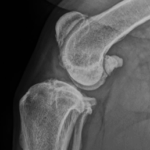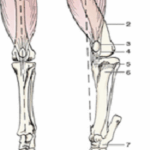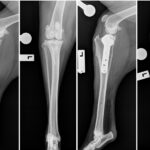Dog bite wounds are one of the more common injuries we see. Whether the result of a fight or over-exuberant play, they do need to be see promptly by a vet.
Often pet owners make the mistake of seeing a small puncture wound and assuming it’s a minor injury. While these wounds are sometimes as small as they seem, in most cases the wounds are much more extensive under the skin.
When a dog bites, we normally end up with at least 2 areas of damage – puncture wounds from opposing teeth will normally create two holes or areas of damage. When the tooth penetrates the skin, it often carries hair and dirt into the wound, creating a high chance of infection. We also find that underneath the skin there is a lot more damage than what can be seen on the surface. When a dog grabs on and shakes the skin tends to move with the teeth. This means we get a small puncture wound in the skin and extensive damage to the underlying tissues. The skin is frequently pulled away from the underlying tissues, which creates pockets where fluid can collect.
This combination of dirt and hair, tissue damage, and pockets of fluid is the perfect environment for bacteria to grow, leading to infections and further problems.
For some dog bite wounds, we may be able to manage them with flushing and antibiotics. Many do require surgical treatment to clean out the contamination and damaged tissue as well as establishing drainage to prevent the build-up of fluid. In some cases, we see the damage extending into the abdomen or chest cavity, which is a life-threatening emergency.
As with so many things, early intervention tends to give the best results. Once an infection has become established the treatment will normally become more extensive and more expensive. If your dog has been bitten by another dog, we strongly recommend you have them checked promptly by a vet.



